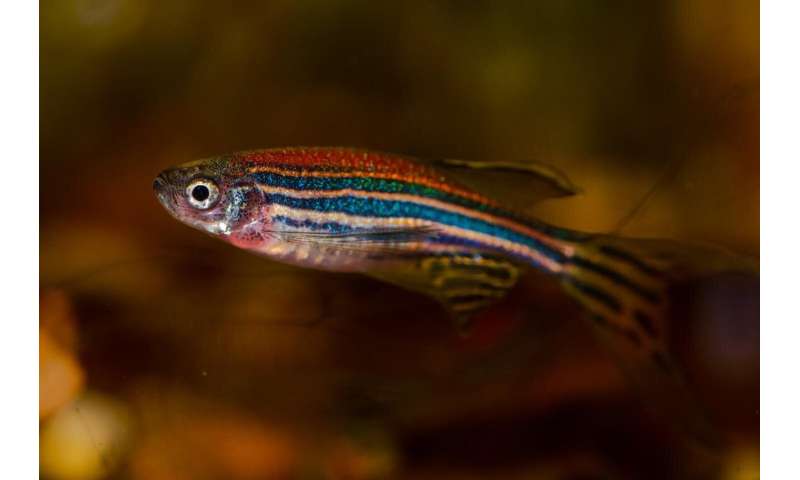Developing neural circuits linked to hunting behavior

University of Queensland researchers have made an important step forward in linking changes in behaviour to the underlying development of brain circuitry.
When zebrafish are learning to hunt fast-moving prey, it is a highly dynamic period in their development.
The researchers demonstrated the relationship between improvements in zebrafish’s hunting skills and the development of sensory coding in a part of the brain which responds to visual stimuli.
How refinements in neural circuitry lead to changes in behaviour was still largely a mystery, which Professor Geoff Goodhill from the Queensland Brain Institute and the School of Mathematical and Physical Sciences and his postdoc Dr. Lilach Avitan were keen to solve.
“Neural coding is the study of how neurons represent information—during early development the brain must build neural codes appropriate for survival,” Professor Goodhill said.
“In mammals, knowledge about how neural circuits develop is expanding rapidly, however, little is known about what happens in newborn animals— the impact of early developmental changes in neural coding on behaviour remains largely unknown.”
Researchers can gain insights into the link between neural circuits and behaviour by studying zebrafish larvae, which display sophisticated natural behaviours from only a few days after fertilisation.
After just five days post-fertilisation, the zebrafish’s visual-motor system is already mature enough for the larvae to hunt moving prey such as the single-cell organism, Paramecia.
“We can watch how the zebrafish larvae hunt and map this behaviour to how their neural code changes in their first few days of development by imaging the neural activity of their brain cells,” Professor Goodhill said.
Zebrafish have a visual processing centre in their brains called the optic tectum, which transforms sensory input into movement and orients animals to objects of interest in the outside world, essential for hunting behaviour.
“We found that the hunting behaviour was refined over the first few days when the larvae start to hunt, and this is correlated with an improvement in the decoding and transmission of information in their optic tectum,” Professor Goodhill said.
Zebrafish larvae initially feed on the yolk sac in the fertilised egg but after five days, they are ready to start hunting.
The researchers studied the larvae at days four, five, nine and 15 by putting them in a dish with Paramecia and using a high-speed camera to monitor their movements.
They found that the larvae improved their hunting skills over this time.
Once the researchers had observed that the larvae were getting more efficient at hunting, they wanted to know if the changes correlated with developmental changes in the brain.
“Fluorescent calcium imaging can record the activity of many neurons simultaneously, which has given us many insights into how neural coding develops,” Professor Goodhill said.
“By using this approach for the optic tectum of the larvae we could investigate functional changes at the single-neuron level for many neurons simultaneously.”
“We then used mathematical techniques such as information theory to quantify how neural coding in the tectum changed over development.”
“We found that these changes were correlated with the changes in behaviour.
Remarkably, we could even predict the hunting success of individual fish from the quality of neural coding in their tectum.”
Source: Read Full Article
